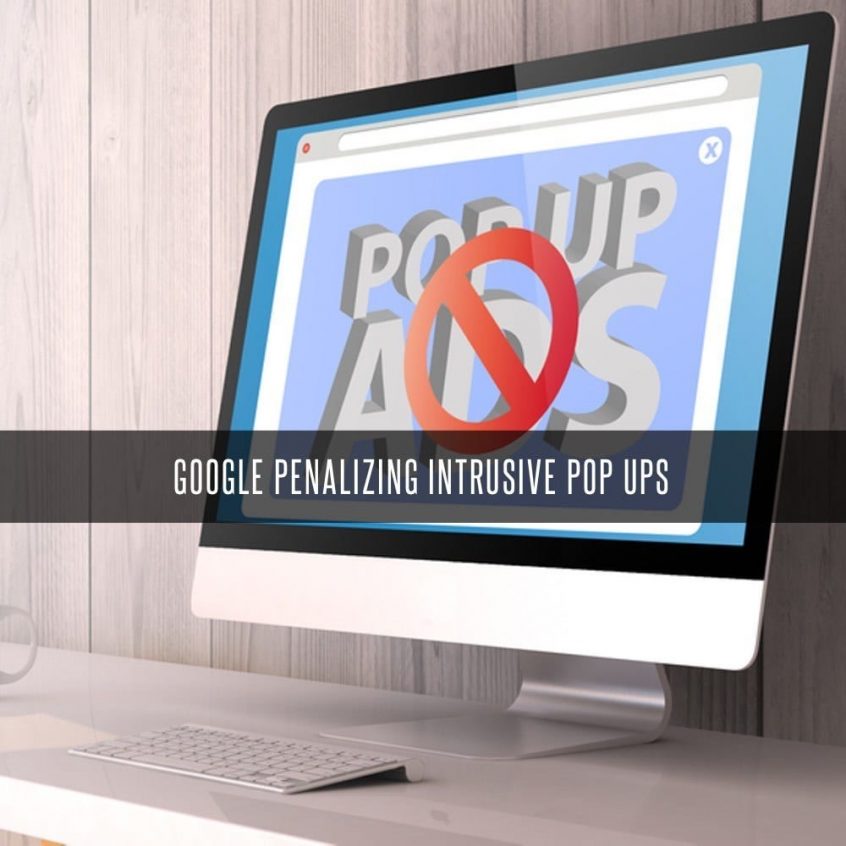Google Penalizing Intrusive Pop-up Mobile Ads
Last year, Google announced that it would start to penalize those who continue to make content less accessible on their mobile sites by using interstitial ads. As of January 10th, these penalties have gone into effect and will cause offending mobile sites with invasive interstitials to rank lower in future searches.
Ranking low in searches due to the existence of interstitials on your mobile site is easily avoidable, but can end up being very costly to your business and your marketing budget if you do not make the necessary adjustments to your mobile site.
What are Intrusive Interstitials?
Your average interstitial ad on a mobile site is very similar to a pop-up ad on a desktop browser. When a user navigates from one page to another, an interstitial will appear on top of the page the user is trying to see, forcing the user to view the ad before manually closing it in order to continue to the page they wish to view. Interstitials can be different sizes and can partially or entirely cover the mobile page, but all interstitials require the user to manually close them before proceeding to the content on the actual mobile site. For this reason, Google has deemed interstitials to be disruptive to the mobile browsing experience, and is moving forward with their plan to lower the search rankings of sites that continue to use them.
Here are 3 samples of what Google deems as an Intrusive Interstitial on Mobile, from theverge.com

Making Your Mobile Site Compatible
Now that you are familiar with the new rules, how will you go about making your site compatible so you can avoid future penalties? To get you started, we have a few simple tips to make your mobile site more user friendly than ever:
First, you should try to consider what Google may be looking for when it comes to intrusive interstitials. If their goal is to make mobile browsing more accessible and streamlined with fewer interruptions, then consider what aspects of your mobile site might detract from that objective. For the most part, pop-ups that serve a purpose such as age verification will be allowed, but anything that completely covers a page should be seriously scrutinized, since these types of interstitials are the ones that Google will be specifically targeting in 2017.
Desktop vs Mobile Interstitials
You should also be willing to give yourself and your marketing team some time to adapt to the new restrictions. Initially, you may see a slight decline in your revenue, but if you consistently provide relevant, high-quality content such as blog posts and infographics, you will find it is easy to turn site visits into profits without the “hard-sell” of the intrusive interstitials. While Google is making moves to take away the interstitials on mobile sites, you can still use them for desktop browsers as well as pages that users navigate through without the use of a Google search. This means you will be able to make changes to your mobile site, without having to completely overhaul your entire website and digital strategy.
To learn more about how you can best adapt your mobile site to Google’s new policies, don’t hesitate to contact Vancouver’s digital marketing experts at Stigan Media. You can also check out our website for more helpful information about other updates from Google, or you can follow us via Twitter, or like us on Facebook to receive our latest updates.
Stigan Media is an award-winning web design & marketing agency specializing in WordPress, WebFlow, and Shopify. Our team focuses on SEO, PPC and conversion optimization strategies to help your company grow.







 Get in touch
Get in touch



